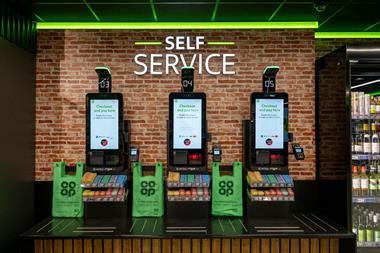Women comprise just 18 per cent of the total technology workforce, according to the government IT skills council e-skills UK. And, with the number of IT specialist female graduates entering the profession having halved since 2001 and continuing to fall, the world of retail IT could remain distinctly male in future years. Yet attracting female employees could help plug the wider IT skills gap and provide store groups with more balanced, astute, productive IT teams.
“The good news is that retail IT has less of a gender imbalance than, for instance, IT in the City or banking sectors, so it would be shrewd for the sector to build on that,” says Maggie Berry, director of networking group Womenintechnology.co.uk. “There is a business benefit to having a more balanced team – men and women bring different things to the table – and when it comes to understanding the user experience, women can be highly valuable.”
Zavvi Entertainment project support team leader Helen Porter spends her week ensuring staff at the company’s stores receive prompt IT help and an empathetic attitude from her team. “The role entails some implementation projects, but my specialism is the EPoS system. When problems arise and are communicated through the helpdesk, my job is to ensure a rapid response,” says Porter.
“I think having an understanding of retail and what staff on the shop floor need is a vital part of what myself and my two colleagues do. We need to understand how the systems work technically, but we must also appreciate their importance for store staff who are relying on them as basic, everyday tools.”
People like Porter, who can successfully combine IT competencies with insights into the wider business implications of retail systems, will be highly valuable in the coming years, say industry observers. To retain a competitive edge, companies need the right staff to develop, implement, run and support their systems.
Frances Riseley, practice manager at retail business process consultancy Martec, says: “Retail employs huge numbers of part-time staff – often young and middle-aged people – and employee turnover levels are high. So, with any IT system being introduced, it’s crucial to make it as user-friendly as possible and to support those users as fully as possible.”
Having more women working in retail IT – particularly providing top-level input into project management and strategic planning around what systems are needed and how they should be implemented – would be highly beneficial to retail companies. The implication is that geeky, male-dominated IT departments won’t cut it in this new landscape, where effective use of IT underpins performance, customer service and profitability.
“I believe the retail sector is genuinely missing out,” says Thresher Group interim chief information officer Nicola Duckett, one of only a handful of women running IT departments for large retail organisations. “Retail IT today is about business change. It’s about growing businesses and women can offer so much in that field.”
Management consultancy firm McKinsey has found that companies with a higher proportion of women on their management committees outperform those that don’t. And recruiters conscious of the dire shortage of IT graduates entering the job market believe that the evolution of IT roles from geeky technicians working in isolation to more rounded project managers could be just what’s needed to draw in more women.
Berry welcomes the drive in higher education to introduce degrees that take a broader approach.
For instance, e-skills UK has teamed up with a number of universities and the software company Micro Focus to create a more business-facing degree course. The Information Technology Management for Business degree (ITMB) is split between business studies (35 per cent), technology (35 per cent), communication (20 per cent) and project management (10 per cent).
“It also helps that big companies are going into schools and colleges to explain to pupils what jobs in IT entail today,” she says. “If this can help steer girls at school age towards doing science and maths A-levels, we will be far more likely to have the numbers we need going on to do computing degrees and entering the profession. At the moment, the early drop-off rate is far too high.”
If the lack of understanding about IT career opportunities can be overcome, women would certainly entertain the idea of working in the field, believes Cathy Holley, a partner and chief information officer (CIO) specialist at headhunter Boyden. “And when you look at director-level jobs, things get very exciting these days,” she adds. “If more women realised how exhilarating and influential the role of IT director can be, I think they would be far more likely to pursue that kind of career. There are also great financial rewards.”
Holley says the skills now required to succeed as a CIO are very different to 10 years ago. “Of course, a degree in computer science or a background in programming would be a good way to start but, really, CIO jobs today are not technical,” she explains. “They are about managing large teams, working with enormous budgets, influencing boards and driving business change. There is just as much need for understanding how the business works and what makes people tick as there is for systems knowledge.”
She adds that, if you’re on the board, you’ve got to be articulate, commercially minded, able to argue your case and be personable and charismatic enough to stand out alongside the marketing director, commercial director, HR director and so on. “This is no place for quiet, withdrawn computer whizz-kids,” she says.
The CIO might be required to shake up an under-performing IT department, win board approval for a major IT infrastructure overhaul, oversee an outsourcing initiative or handle the management of change following a merger or acquisition. Women’s ability to communicate, read how colleagues are feeling and adapt their management style to suit different occasions would be beneficial. “The power of emotional intelligence should not be underestimated in such situations,” says Holley.
People like Sainsbury’s IT and change director Angela Morrison – who was promoted to the company’s operating board two weeks ago – and Duckett are valuable role models, demonstrating that it is possible for women to make it to the top in retail IT. But women must be willing to sacrifice a degree of family and social life if they’re aiming that high. “Just as for any executive post, CIOs have to be totally dedicated to the job and can’t really expect much flexibility if they want to go all the way,” says Holley. “That said, if someone is an outstanding CIO and wants to go off and have a baby, the company will always want them back.”
Long spells of time away from the job simply aren’t possible, though, due to the incredible speed of technological change. “A year is a long time in technology,” says Berry. “Change is not so fast-paced in law or medicine but, in IT, returnees will have a lot to catch up on after an absence. Some women expect a five-year career break to spend with their new family, but that is untenable in IT.”
The offer of flexible working schemes would undoubtedly make general IT roles more attractive to women, but a commitment to putting theory into practice is needed if the potential pool of talent is to be convinced. In April this year, a survey by Womenintechnology.co.uk of more than 200 women found that the majority of those working in IT were dissatisfied with their work-life balance. Although 77 per cent said that their organisation did support flexible working, many added that provisions were limited and rarely practical. Comments suggested that flexible working hours were frowned upon by colleagues and that managers’ discretion was the most influential factor.
When it comes to redressing the gender imbalance, recruiters are beginning to understand that they must recruit from a wide variety of backgrounds, consider qualifications beyond pure computing degrees and provide ample in-house training and support for talented recruits. Everyone wants to be an ‘employer of choice’’, so offering flexible working could make a valuable difference.
There’s a long way to go. Technology consultancy Martec conducted its annual survey of UK retail CIOs earlier this year as part of its 2008/09 UK IT in Retail Report and, out of the 100 retail IT leaders interviewed, only eight were women. On the upside, this demonstrates that women are not completely absent from the field. But the sector is obviously failing to attract and nurture sufficient talent from the 51 per cent of the population who are women. Long-term recruitment strategies for business-critical IT managers and directors of the future clearly need some work.
Mind the Gap
18%
of the IT and telecoms professional workforce is female, down from 22% in 2001
Gender imbalance is prevalent on IT-related degree courses, and this is worsening over time throughout the education system
15%
of applicants to computing degree courses are female
10%
of A-level computing students are female
Source: Technology Counts: IT & Telecoms Insights 2008, e-skills UK


























1 Reader's comment